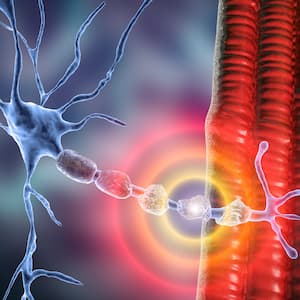First Patient With Diabetic Foot Ulcers Screened for SkinTE Pivotal Trial
Another recent program in the investigational landscape was Helixmith’s deprioritized Engensis diabetic neuropathy gene therapy.
First Patient With Diabetic Foot Ulcers Screened for SkinTE Pivotal Trial

The first patient with Wagner grade 1 diabetic foot ulcers (DFUs) has been screened for a phase 3 pivotal trial (NCT06140303) of SkinTE, an autologous heterogenous skin construct (AHSC) that is based on PolarityTE’s proprietary minimally polarized functional unit (MPFU) technology.1
The trial is entitled "Closure Obtained with Vascularized Epithelial Regeneration for DFUs with SkinTE II," or "COVER DFUS II", and will be conducted under PolarityTE’s open investigational new drug (IND) for SkinTE.
“Every second, someone around the world develops a diabetic foot ulcer. These patients are at immediatelyhigh risk not only for amputation but also for hospitalization and even death. This is why I’m so thrilled that we are evaluating the ability of a promising therapy that might help us stem the tide of needless suffering for our patients and their families,” PolarityTE board director David Armstrong, DPM, PhD, Professor of Surgery and director, Southwestern Academic Limb Salvage Alliance (SALSA), Keck School of Medicine, said in a statement.1
The COVER DFUS II trial has a planned enrollment of up to 120 participants at up to 20 clinical sites in the United States randomized to receive either SkinTE plus standard of care (SOC) or SOC alone. The primary endpoint is the incidence of DFUs closed at 12 weeks; and secondary endpoints include percent area reduction (PAR) at 4, 8, and 12 weeks; total number of in-person wound care clinic visits and/or related hospital days; related CAM Boot use; time to closure within 24 weeks; and treatment-emergent adverse events (AEs).
READ MORE: Vertex Pauses Diabetes Cell Therapy Trial After Unrelated Patient Deaths
“DFUs often persist because the tissues within the wound bed are biologically exhausted. We are excited to evaluate how the optimized healthy cells from the patient in SkinTE can facilitate closure in these difficult-to-treat ulcers. We are thankful for the patients and investigators whose participation makes this trial possible,” Nikolai Sopko, MD, PhD, Chief Operating and Scientific Officer, added.1
Potentially disease-modifying treatments have been evaluated for DPU/diabetic peripheral neuropathy (DPN) before, although the field is certainly not saturated. One recent program, Helixmith’s Engensis (VM202), reached a phase 3 trial in patients with DPN before failing to meet efficacy endpoints in one substudy of statistical benefit in 500 patients in the intent-to-treat population compared with SOC on multiple measures in 2021. These measures included daily pain and sleep interference diary for pain and sleep interference, Visual Analog Scale for pain, Brief Pain Inventory [BPI] for DPN for pain severity and pain interference, and Michigan Neuropathy Screening Instrument. Another substudy showed conflicting results, with statistically significant reductions in these measures between arms. There were no unexpected safety concerns with Engensis’ safety profile.2
“There was a serious discrepancy in results between DPN 3-1 and DPN 3-1b; only the latter study replicated results from the phase II study. Although it is unclear why efficacy was observed only in the latter group, there are several possibilities,” first author John A. Kessler, MD, Ken and Ruth Davee Professor of Stem Cell Biology, and Professor of Neurology (Comprehensive Neurology) and Pharmacology, Feinberg School of Medicine, Northwestern University, and colleagues wrote.2
The possibilities included a change in contract research organizations midway through the trial and a large variety of centers included in the trial.
“Given the excellent safety profile of VM202, the potential for disease modifying effects, and the high unmet medical needs of the DPN patient population not on gabapentinoids, further study is warranted especially in patients not on gabapentinoids,” the authors concluded. Notably, Helixmith seems to have moved on to hopefully greener pastures in assessing the therapy in patients with amyotrophic lateral sclerosis instead.2
REFERENCES
1. PolarityTE Announces First Subject Screened in Phase III Pivotal Study Evaluating Investigational New Drug SkinTE® in Diabetic Foot Ulcers. News release. PolarityTE. February 26, 2024. https://www.biospace.com/article/releases/-polarityte-announces-first-subject-screened-in-phase-iii-pivotal-study-evaluating-investigational-new-drug-skinte-in-diabetic-foot-ulcers/
2. Kessler JA, Shaibani A, Sang CN, et al. Clin Transl Sci, 2021(14): 1176-1184. doi: 10.1111/cts.12977
OPMD and Advancements in Genetic Research
April 22nd 2025Matthew Wicklund, MD, a professor of neurology at the University of Texas Health Science Center San Antonio, discussed the genetic basis of oculopharyngeal muscular dystrophy, as well as the primary challenges in diagnosing and treating the condition.